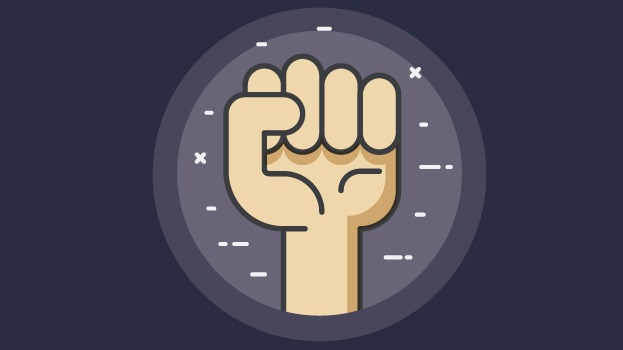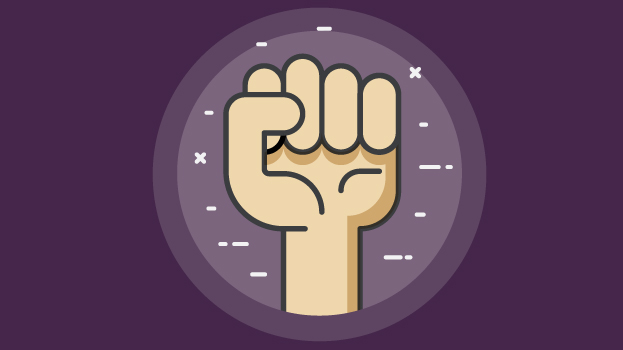Nowadays, human capital is deemed one of the most valuable resources in our economy. Yet, when it comes to making the most of this “asset”, many businesses lose focus.
When looking to grow sustainably, one must remember that human capital is in fact “human”, and as such, requires care and support to thrive. And although “emotional intelligence” has been top of mind and headline worthy these past few years, it seems that companies still have a lot of work cut out for them when it comes to truly understanding how to best care for their employees and embrace mental wellbeing as central part of their business model.
This is even more important in times of crisis where isolation may cause a lot of stress and distress. So how is working remotely impacting employee’s wellness and how is this in turn affecting their capacity to work? Why is mental health so difficult to talk about in the first place? And what can you do as an employer or as a manager to address it? Let’s find out together shall we…
How Is Remote Working Affecting Your Employees’ Mental Health?
In the past few years, we have seen flexibility as a benefit rise in popularity and in some cases, become an intricate part of a company’s business model. Flexibility has even gone as far as become a way for companies to differentiate themselves from their competitors to attract and retain talent.
Whilst working from home on an ad-hoc or permanent basis might have become the norm for some companies (especially up and comers in the tech industry), flexibility at work is most certainly not a widespread benefit, especially when the nature of the business, its location or even its management style doesn’t allow for it (think logistics, construction or brick and mortar retail businesses for instance).
Yet, regardless of where your business stood in this regard at the beginning of 2020, it is undeniable that COVID-19 has since then pushed many industries and businesses to rethink their stance on flexibility, forcing the majority of the workforce to work from home due to government mandated isolation.
And even though this may only be temporary, remote work and flexible arrangements have now become the new norm around the world, giving many the opportunity to experience the pros and cons for themselves.
From increasing productivity, saving time, assisting with work life balance and even fostering greater happiness as a whole, remote work has undeniable benefits for both the employer and the employee.
Yet, what we couldn’t foresee is that when extended over long periods of time, as well as when it is perceived as “forced upon” rather than as a benefit, remote working can have the opposite effect.
From fostering feelings of isolation and disconnect, creating a greater struggle to set boundaries, lack of motivation, decrease in productivity, etc, remote working on a mass scale can quickly become problematic, and have a detrimental effect on mental health.
In such a situation, it is easy to feel powerless as an employer or as a team leader. Having never gone through such a pandemic before or been physically removed from your employees for so long, it raises the question on how to best care for your employees without being intrusive. Which brings us to our next point…
Why Is Mental Health So Hard To Address?
As a leader and as an employer, we understand that your main goal is to bring out the best in your people so as to be more productive, more profitable and foster growth. Yet, without proper support, employees can very quickly spiral down and not be in the headspace to give their best at work.
It is widespread knowledge that understanding how people feel is the first step in supporting them. Yet, it is still incredibly common for leaders and managers to be uncomfortable or not know how to best address the topic of mental health with their colleagues and team members.
For some, it goes beyond the conversation and extends to difficulty in reading body language so as to determine whether someone on their team is doing well or going through hardship. Add in social distancing, and all of a sudden an accessible challenge becomes a much larger and more overwhelming hurdle to overcome.
With the added stressors of navigating uncertainty and working from a distance, the importance of opening up conversations around mental wellbeing at work and providing a safe space to speak up about things like burnout and isolation is especially important.
So why is it so difficult to find out whether your employees need help or not and why being open is key?
1. We are all different
We all go through different phases of our lives and have “different mountains” to climb, but not all of us manage these hurdles the same way.
Anxiety and stress are common factors which influence the way we react to any given situation and some need more support than others. This is even more important in times of crisis.
Although it is undeniable that as an employer you have your own set of challenges and worries to handle, it is also incredibly important to empathise with the pressure that employees may go through without a tangible view on the business plan and figures.
2. Fear
Overcoming the discomfort of talking about mental health is hard. One of the main challenges that come up is the ability to empathise with your team members, which can sometimes bring up personal fear of our own.
Most people do not like replaying painful memories of their life and even less, consider the possibility that they might need mental support. This is mainly due to the fact that for the better half of our human existence, mental health has been a taboo subject at home, and even more so at work.
This fear was built upon the (wrong) idea that needing support means you are somehow weak. It is important to remind your team that the ability to be and share their vulnerability is in fact a strength. The only way to do so is to lead by example, let go of your own fears, taking responsibility for your emotions and be vulnerable yourself.
Share your discomforts, fears and challenges with your team. Remember your humanity. By doing so, you will open the path for them to be vulnerable themselves.
3. Stigma
Speaking of taboo, it is important to note that the stigma surrounding mental health is still very present amongst the greater population.
Even though a lot has been done in this space, a huge amount of work still needs to be done in the way businesses address it. Mental illness is a challenge, but it is not a weakness and this understanding needs to come from the top.
What Can Businesses Do Now, To Support Employee’s Health And Wellness?
The stigma attached to mental illness is such that employees may be reluctant to seek help, especially in the current economic climate, out of fear this might put their position at risk.
However, failure to acknowledge an employee’s mental health can hurt productivity, professional relationships, and have considerable long-lasting effects.
Professional support needs to get better. Employers need to be more flexible, sensitive and open-minded just as they would for injured employees or those going on parental leave.
This might seem daunting but it doesn’t have to be. Here are a few ideas that you can implement quickly to support your teams, and in turn, support your business:
Lead by example from the top down
When managers support and take part in wellness initiatives, employees feel more supported and tend to follow suit. Empower your managers and leaders with mental health training so that they too feel supported.
Create a mental health policy
And speaking of leading by example, a great way to do so is by writing black on white what you stand for as a business so as to establish a safe space for all employees.
In order to create a mental health policy, start by defining what you want it to accomplish with your HR team. They will then be able to do some research so as to write a rough draft.
After you’ve loosely outlined your policy, we recommend seeking further help from a mental health expert as well as your legal team to make sure the policy is inclusive and thoughtful. If this seems too overwhelming for you, you can always outsource this to a local HR expert to take care of everything.
Hire a coach or mindfulness professional
Providing technical training for employees is on the rise, but why not leadership or mental health coaching? Having a professional helping with stress, resilience or leadership in times of crisis can be extremely useful. The same goes for a meditation teacher for instance.
Offer free screening tools
Keeping in theme with being open about mental health at work, providing free screening for employees gives them the chance to assess their risks and therefore, to seek support if needed.
Implement “headspace leave”
No one questions it when you take time off to recover from a cold, see the dentist for a check up or go to the physio when you’ve pulled a muscle, so why is taking time off to take care of your mental health still so taboo?
Seeing a psychologist or taking some time to unwind when needed has yet to be normalised, and the only way to move forward is for businesses to lead the way.
An employer can make a world of difference to those seeking support by offering more flexibility around working arrangements or by being more inclusive on how “personal leave” is used.
For instance, we’ve personally created “Headspace Leave” as part of Personal Leave which can be taken by our Polyglotters when needed. We’ve differentiated it to Sick Leave so that our teams recognise that we value their mental wellbeing just as much as their physical one.
Normalise mindfulness
Introduce opportunities for employees to focus on their mental wellbeing, both inside and outside the office.
For instance, exercise and nutrition are strong factors in our wellbeing. So whether you offer incentives to employees who participate in wellness programs, free (online) gym memberships or give access to fresh fruit and veg at the office, making wellness a priority will help.
Another great way to help employees and encourage conversation is by offering them access to an app-based mindfulness training program like Headspace, which has been proven to reduce stress.
In fact, in light of COVID-19, Headspace have launched a dedicated hub for workplaces to support their team’s mental health by offering a FREE collection of guided meditations and exercises (including brand-new recordings) to all employers and their employees.
Further to this, during challenging times such as these, extra initiatives can be put in place such as:
– Putting emphasis on communication and informing your employees about the steps your business is taking to address COVID-19 (find ours as an example).
– Being open and transparent with employees about their job security.
– Staying connected via video conferencing & collaboration software such as Slack, Zoom or Microsoft Teams.
– Creating and setting aside “water cooler moments” and celebrating milestones, such as birthdays and anniversaries.
– Setting up a dedicated team to answer COVID-9 related questions.
We know how challenging it can be to have uncomfortable conversations and even more so in times of uncertainty. However, this is precisely when strong leadership is needed. There is no better time to go beyond the simple “How are you?” in your next Zoom catch up or phone call with a peer or team member.
Ask them how they truly feel and how they’ve been coping. Be vulnerable yourself by sharing how you’ve been affected personally as well as ways of how you’ve been taking care of your own mental health. You never know, you might learn a thing or two from your own team members. Change starts from the top, and now more than ever is the time to lead by example.













 May 12, 2020
May 12, 2020 







